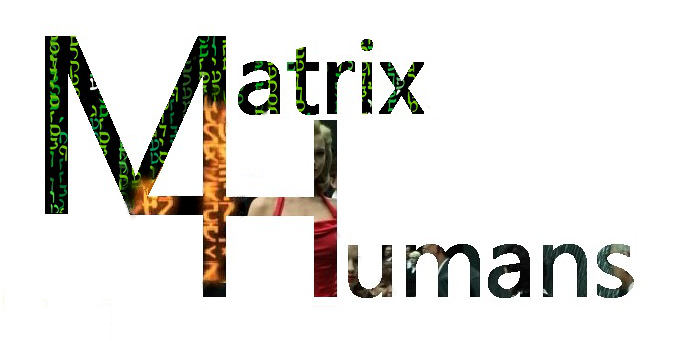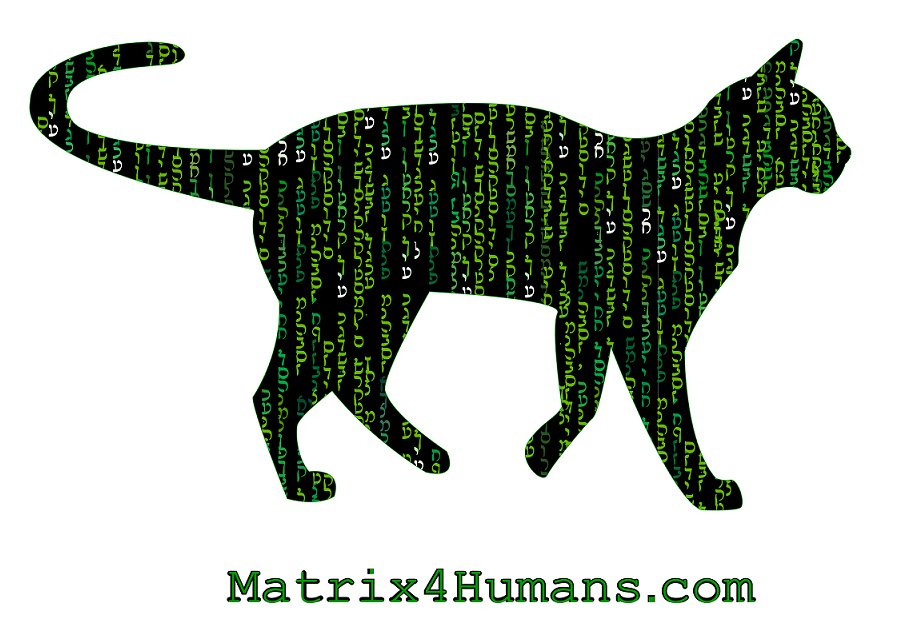When we said, “The M-Files” was going to go into some ‘interesting’ areas, most people probably did not have this in mind. As we’ve mentioned, all human creative work emanates from how we are designed. This is called the “Image of God” in Genesis 1:27 of the Biblical narrative.
Kabbalah explains this ‘image’ as being a ‘template’ of ten emanations of God within existence, called sefirot (creative forces), that we can learn of. By rectifying these within us, we bring repair (tikkun) repair to ourselves and out the world. If you have not yet, we recommend reading about these in our introductory article.
As we have shown, these emanations are reflected in well-recognized systems for self-improvement such as “The 7 Habits of Highly Effective People,” as well as the Alcoholics Anonymous “12-Step Program.”
The sefirot also appear throughout human creative works such as art, books and movies. Preeminent are the Matrix films which we show through the Matrix4Humans Knowledge Base. It’s a remarkable phenomenon that the more something aligns with this template, the greater it resonates across the spectrum of human perspectives. People often ‘feel’ attracted to things in our world without fully knowing WHY they do.
This ‘WHY’ is another “cat we’re letting out of the bag,” with The M-Files section of the Matrix4Humans project.
And now we’re heading off into the Hundred-Acre Wood …
Introduction
One of the works that has made such a universal connection, for decades, is the stories of Winnie the Pooh. These were originally books (beginning in 1921) that later came to life in video. A full cast of characters developed over time. As we explain below, the set of figures align exactly with the ten sefirot.
As with the Matrix, 7 Habits and 12-Steps, we first look at elements of the basic structure. The story of Winnie the Pooh follows the complete “template of 10” much like the Matrix does, with a distinct “upper 3” and “lower 7.” It also resembles the 7 Habits in how precise the characters align with the respective emanations.
The Upper Intellect
 Christopher Robin
Christopher Robin
The first of these characters is that of Christopher Robin. Although the other animal characters ‘exist in his mind,’ he interacts with them within their adventures. This character is unique as it has both the aspect of connectedness and separation.
This reflects the emanation of Keter, which is ‘crown.’ Though a crown is ‘attached’ to the body, it is also separate from it. This is different than the other Sefirot that all correlate to a part of the body. Keter is seen as a “buffer” between G-d and the remaining Sefirot, all of which emanate from Keter. In a similar way, all of the other characters come out of the mind of Christopher Robin.
On a peculiar note, it’s quite the coincidence that in one episode, the characters seek to find Christoper Robin in a (seemingly) foreboding place called the ‘skull.’ In kabbalistic literature, Keter is associated with the skull (‘golgatha’).
 Owl
Owl
The next character is Owl. He doesn’t appear as often and is a bit of a mysterious figure. In western culture, the Owl is associated with Wisdom. We indeed find him on the Tree of Life diagram where Wisdom/Chokhmah is.
If you are familiar with the Winne the Pooh stories, you know that Owl’s main concern is with the past. This is a trait associated with the kabbalistic idea of Wisdom/Chokhmah. Along with Kanga, Owl functions at an intellectual level in his relationship to the other characters, though in a far less direct manner than her.
 Kanga
Kanga
The only clearly feminine character among the group, Kanga represents Binah/Understanding.” She provides motherly oversight to the other characters. Her focus is on the future – the opposite of Owl.
Kanga represents the attribute of Binah/Understanding, which is called the “mother above” the seven below. She has intermittent involvement with the “lower seven” characters on a more direct and regular basis than Owl.
The Lower Seven
The Upper Triad
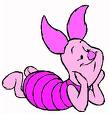 Piglet
Piglet
Piglet functions from the perspective of giving and hospitality. This is reflective of Chesed, which is loving-kindness without conditions. Piglets is always there to jump in and help. As with Chesed, he often comes up with imaginative solutions and can display great power “from beyond” when it’s called for.
While it may sound good, everything needs boundaries. (“Structure brings discernment.”) This ‘deficiency’ within Chesed can cause anxiety and a fear of conflict or failure. This is especially seen in one story where he gives up his home to Owl, simply because Tigger thought the place was Owl’s house (following a flood). The counterbalance to Chesed is the next attribute of Gevurah/Judgment.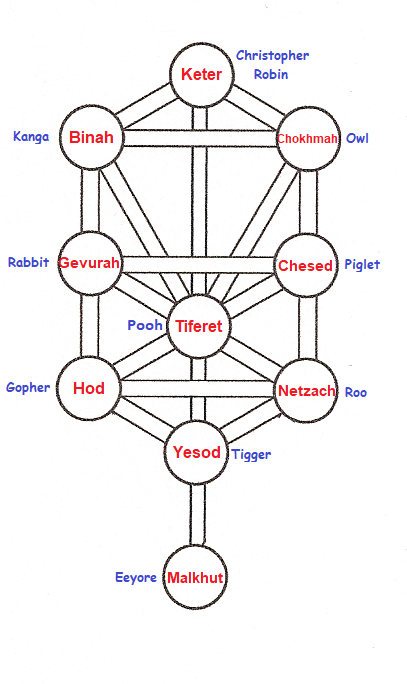

Rabbit
Rabbit represents the aspect of restriction. He often spends time alone in his own garden or reading and cleaning. Rabbit also emphatic about rules and order. He is the opposite of Piglet, as he is constantly acting as Gevurah, judging and setting boundaries for himself and others.
As with all the emanations, this can be a good or bad thing. Sometimes Rabbit’s obsessions can cause him to become a big egotistical. It can also cause him to “lose sight of the big picture” and becomes accident-prone.
While Rabbit does at times act harshly to the others, he also tries to get them to always consider their actions. This corresponds to Stephen Coveys 5th habit to “Begin with the end in mind.”
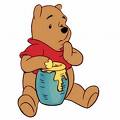
Pooh
The central figure whose life is in harmony when the other characters are in balance. Pooh stands as the representative of the lower seven, as is the case with Tiferet, which the other emanations directly connect to.
Tiferet also has a special bond to Keter above it on the central column. This is seen in the close relationship between Pooh and Christopher Robin. It also reflects in his ability to be courageous and optimistic when ‘trouble’ finds its way into Hundred Acre Wood.
The Lower Triad
In kabbalah, this next lower triad of “the six,” is more actively involved with matters in the physical realm than the three above it, which remain more ‘contemplative.’ (We expound on this in the 7 Habits and 12-Steps articles and in our Matrix Knowledge Base intro article on the sefirot.)

Roo
Roo is a great example o the outgoing force of Netzach. This emanation is about perseverance, the spark to initiate action at the physical level.
Much like Piglet (also on the proactive right side), Roo often rushes into things gets himself and others into trouble — like the time he and Tigger climbed a very tall tree and got stuck there. As is the case with Piglet, he can summon enormous energy when needed – as both operate from the right side of boundless force.

Gopher
If you’ve ever encountered Gopher he loves to observe, gather information and initiate the “blueprints” for the overcoming of obstacles at the physical level. Whereas Roo may relate to the proverb, “He who hesitates is lost,” Gopher’s mantra would be, “Look before you leap.”
In real life, Netzach and Hod work together, with the prior providing the initiative and the latter the calculation. When they function in harmony, the result is proper synergy and connection via Yesod.

Tigger
Tigger is the most ‘dynamic’ character of the lot. When he is humble, he has the ability to bring unity to all. However, he is often prideful (i.e., “That’s what Tiggers do best”) which creates problems at times.
This is a big deal in a number of the stories and is Tigger’s challenge at the point of Yesod. This is the emanation related to our ego and the source of negative views and behaviors when it goes unchecked.
The Seventh
 Eeyore
Eeyore
He is often the “recipient” of the results of the actions of all those “above” him. This corresponds with the idea that everything “descends” into Malkut.
Eeyore walks on the ground on all fours which is representative of the Shekinah, the “divine presence,” which goes out to all “four corners of the world.”
It’s interesting that on a number of occasions, his home is destroyed and he has to move to another place. This is also an aspect of the Shekinah in our physical realm, which wanders about, ‘lost’ in a corrupted world.
The Winnie the Pooh characters are an excellent way to introduce basic fundamentals about life to children – and adults!
